Kilimanjaro is a magical and majestic mountain located in Tanzania. It is known for its diverse and unique wildlife, including a wide variety of birds.
From colorful species such as the Lilac-breasted Roller and the Red-throated Twinspot to more elusive species such as the Mountain Buzzard and the Lammergeier, Kilimanjaro is home to over 300 species of birds.
Whether you’re an experienced birder or just a casual observer, you’re sure to find something special on the slopes of this iconic mountain.
1. African Emerald Cuckoo
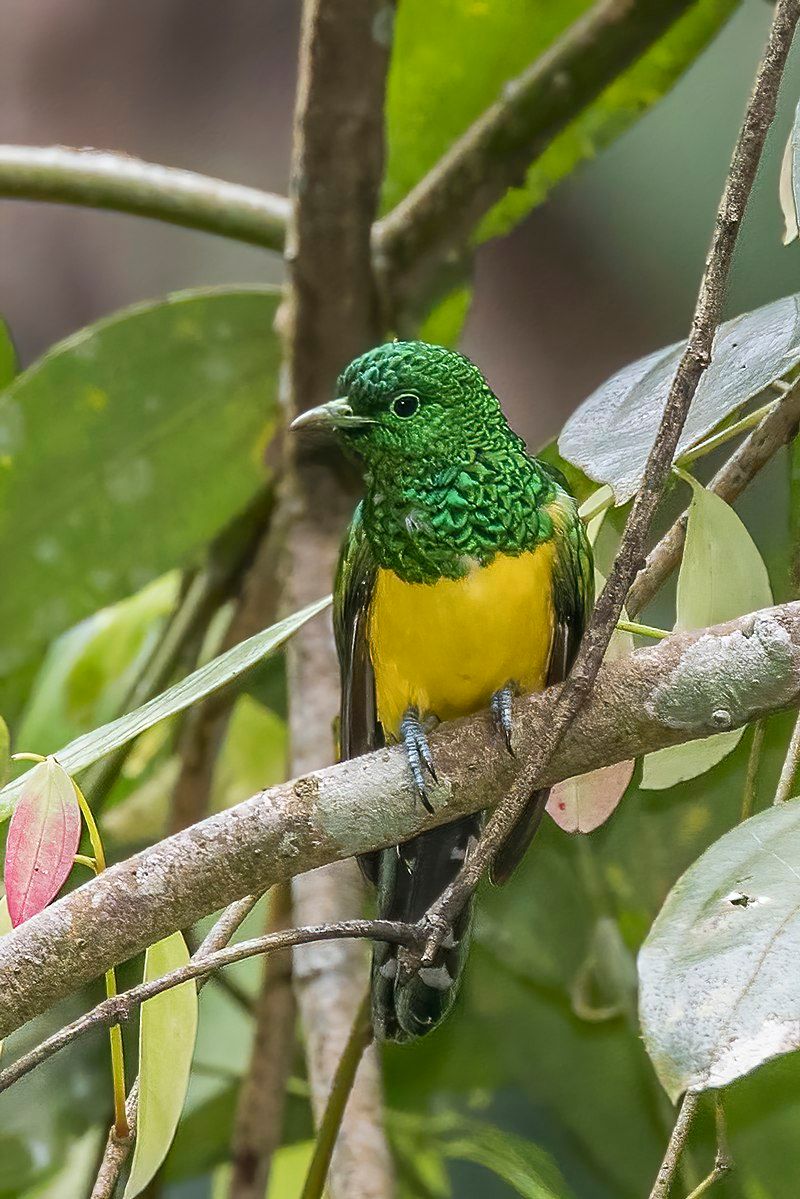
The African emerald cuckoo is a beautiful bird found primarily in the forests of Africa. It has bright green feathers and a distinctive call, which gives it its name. Its wingspan can reach up to 16 inches (41 cm) and it typically weighs about 4 ounces (113 g).
Its diet consists mainly of insects, berries, and other small invertebrates. The African emerald cuckoo is an important part of the forest ecosystem, as it helps to control the population of insects and other pests.
It is also an important food source for other animals, such as owls, eagles, and some reptiles.
The African emerald cuckoo is also a popular bird for birdwatchers, as it is relatively easy to spot in the wild. Unfortunately, the African emerald cuckoo is threatened due to habitat loss. As its natural habitat is destroyed, it is forced to look for food elsewhere.
This has resulted in a decline in its population, which has become a concern for conservationists. In recent years, conservation efforts have been put in place to protect the African emerald cuckoo and its habitat.
These efforts include reforestation, habitat protection, and education about the importance of preserving this species.
| Kingdom | Animalia |
| Phylum | Chordata |
| Class | Aves |
| Order | Cuculiformes |
| Family | Cuculidae |
| Genus | Chrysococcyx |
| Species | C. cupreus |
2. Klaas’s cuckoo
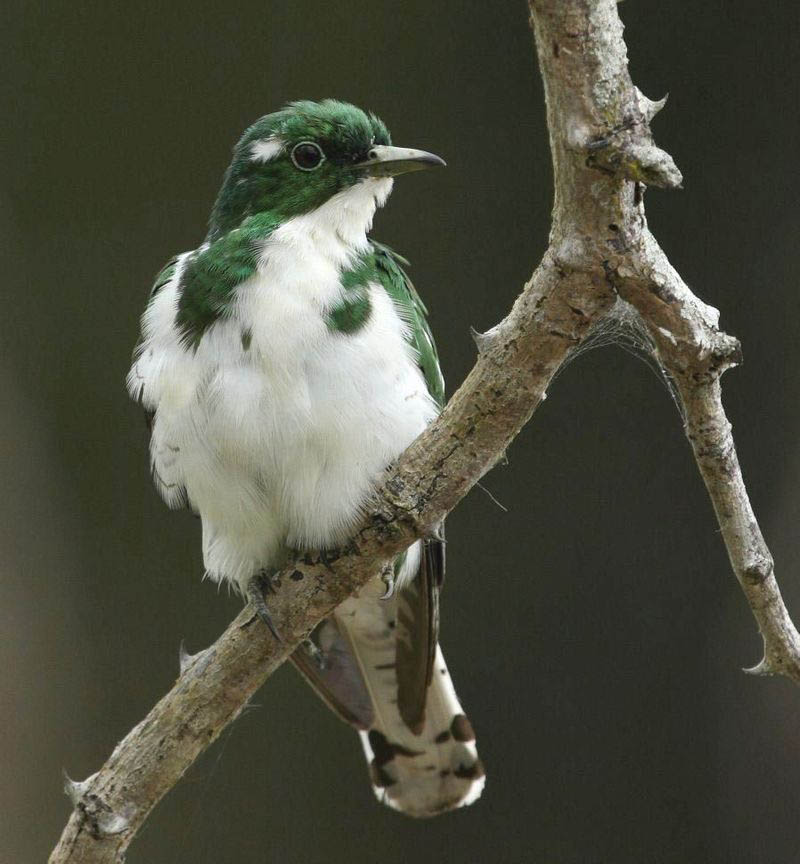
Source: Wikipedia
Klaas’s cuckoo is a bird species belonging to the Cuculidae family, which is commonly known as cuckoo. It is native to the wooded areas of sub-Saharan Africa, which is the area south of the Sahara Desert.
The specific name “Klaas” is in honor of the Khoikhoi man who originally collected the type specimen. The type specimen is the individual that is used to represent and define the characteristics of a species.
This species was named after Klaas to recognize his contribution to science in providing a specimen that helped to clearly identify the species. It is a fitting tribute to the work of Klaas and his commitment to helping to further scientific understanding.
| Kingdom | Animalia |
| Phylum | Chordata |
| Class | Aves |
| Order | Cuculiformes |
| Family | Cuculidae |
| Genus | Chrysococcyx |
| Species | C. klaas |
3. Narina Trogon
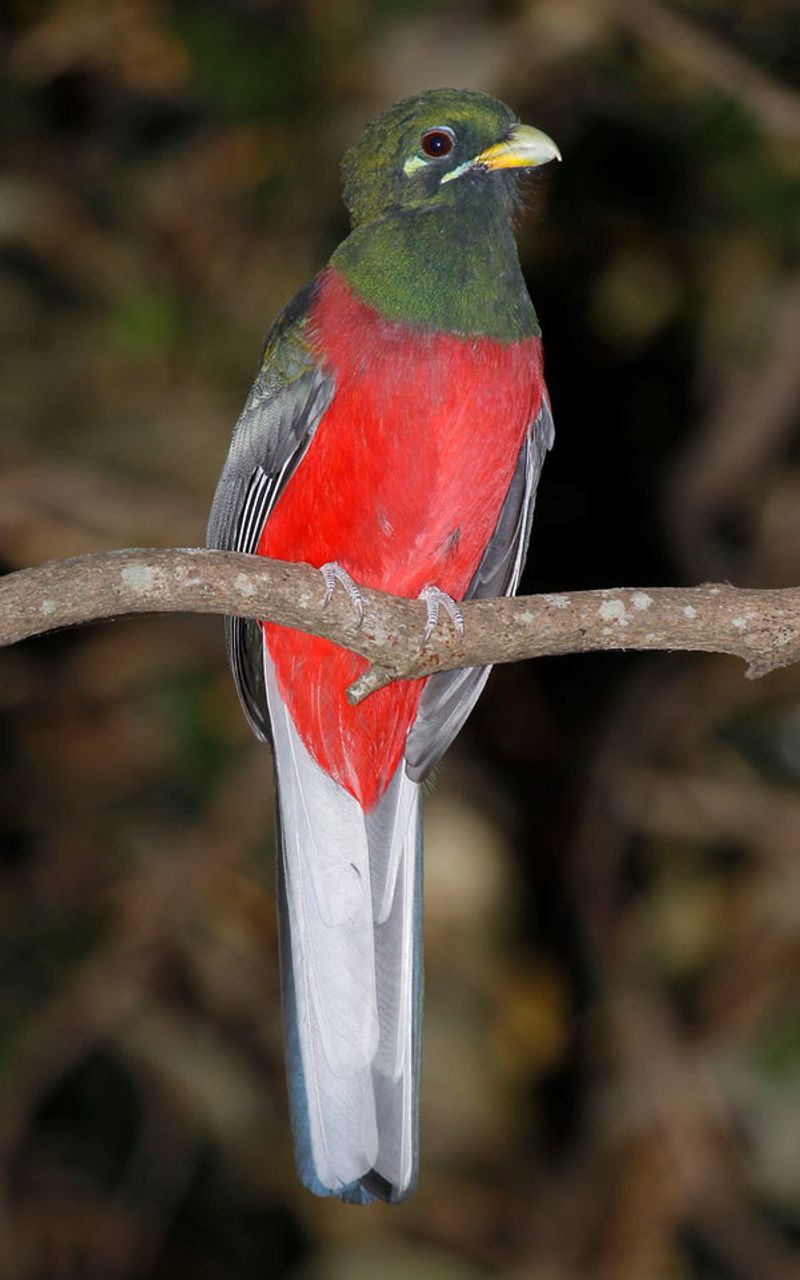
The Narina trogon is a bird belonging to the Trogonidae family and is easily distinguishable by its bright green and red plumage. It is found in the forests and woodlands of the Afrotropics, making it the most widespread and tolerant of the three Apaloderma species.
Despite its ability to adapt to different environments, its numbers are still decreasing due to deforestation. This is because deforestation is leading to the destruction of its natural habitat and, as a result, the Narina trogon is becoming increasingly rare.
Not only does this affect the local populations of these birds, but it also reduces the biodiversity of the area. Deforestation not only destroys habitats but also affects the food sources of these birds, leading to a decrease in their populations.
In order to protect this species, it is important to conserve its natural habitat by planting more trees and restoring the forests and woodlands of the Afrotropics.
It is also important to promote sustainable forestry practices, as these will ensure that the habitats of the Narina trogon are preserved and that their numbers can begin to recover.
By taking these steps, we can ensure the future of this species and help to maintain the biodiversity of the area.
| Kingdom | Animalia |
| Phylum | Chordata |
| Class | Aves |
| Order | Trogoniformes |
| Family | Trogonidae |
| Genus | Apaloderma |
| Species | A. narina |
4. Turaco
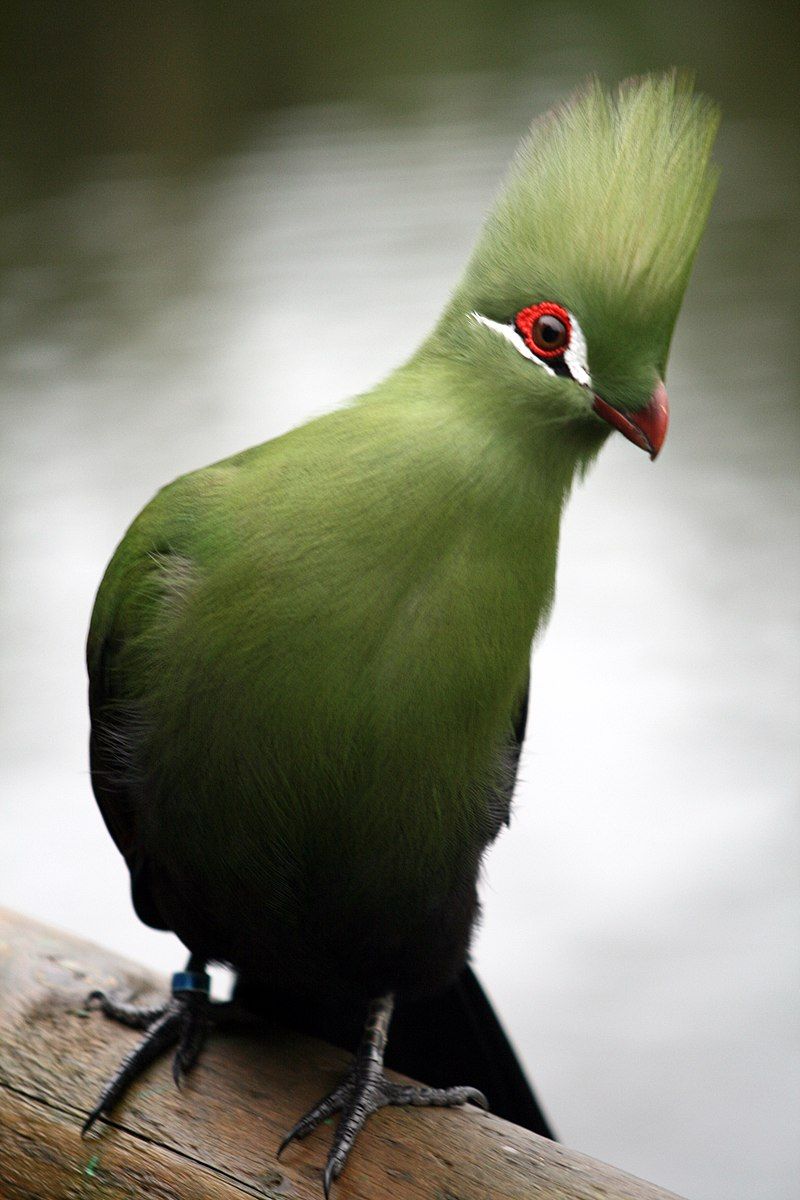
The turacos are a species of birds that belong to the Musophagidae family. This family of birds is composed of two main species: plantain-eaters and go-away-birds. In southern Africa, both turaco and go-away birds are commonly referred to as loeries.
The physical characteristic that separates turacos from other birds is their semi-zygodactylous feet; they possess four toes on each foot, and the fourth toe can be switched back and forth between the other three toes.
This adaptation allows the turacos to move around quickly and efficiently in their natural environment. This unique feature also helps them to grasp and hold onto branches and other objects with ease.
The turacos are also known for their vibrant colors and patterns, which can range from shades of red and green to blue and yellow. Turacos are an integral part of the African ecosystem and play a vital role in the pollination of plants and the dispersal of seeds.
| Kingdom | Animalia |
| Phylum | Chordata |
| Class | Aves |
| Clade | Otidimorphae |
| Order | Musophagiformes |
| Family | Musophagidae |
5. African Pitta
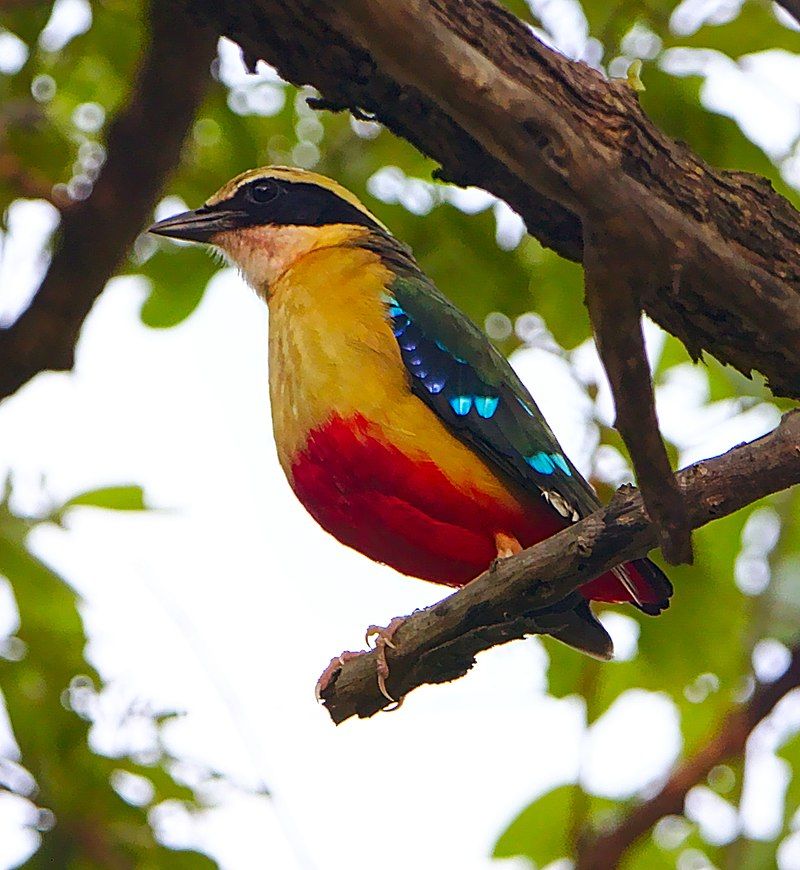
The African pitta is a bird that belongs to the family Pittidae, which is found throughout the Afrotropical region. It is quite common in some areas, such as central Mozambique, while in other areas it is not so widely distributed.
In the western parts of the region, it is both a resident and migratory species, while in other parts it follows an intra-African migration pattern, moving between equatorial and southeastern Africa.
The African pitta is a brightly coloured bird, with a brown back, white underparts and a black head with a white stripe running down from the forehead. It is usually found in forests and woodlands, where it feeds on insects, worms and other small prey.
It is also an important species for the local ecosystem, as it helps to control the insect population in the area.
| Kingdom | Animalia |
| Phylum | Chordata |
| Class | Aves |
| Order | Passeriformes |
| Family | Pittidae |
| Genus | Pitta |
| Species | P. angolensis |
6. Cinnamon-Chested Bee-Eater
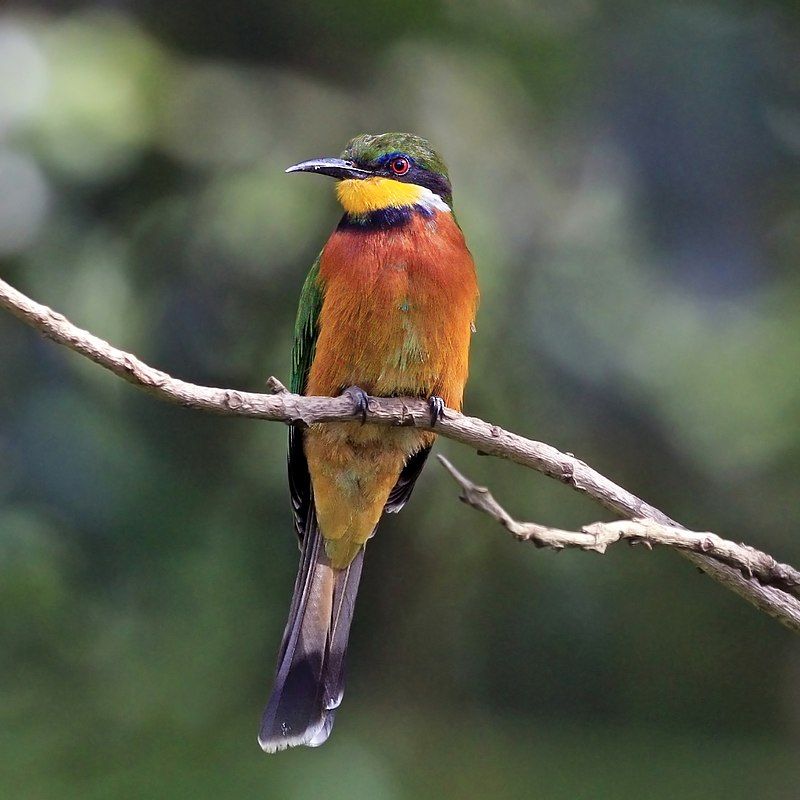
The Cinnamon-chested Bee-eater is an unusual and striking species of bird that is native to eastern and central Africa. This species belongs to the family Meropidae, which consists of over twenty species of bee-eaters.
The Cinnamon-chested Bee-eater is found in a number of countries in this region, including Burundi, the Democratic Republic of the Congo, Ethiopia, Kenya, Rwanda, South Sudan, Tanzania, and Uganda. This species is easily identified by its bright yellow plumage, speckled with black and white markings.
The most striking feature of this species is its chest, which is a deep reddish-brown color and is where it gets its name.
The Cinnamon-chested Bee-eater also has a black eye stripe and a long, slender bill. These birds tend to live in dry, open habitats such as grasslands, savannas, or scrublands. They prefer to nest in cavities in trees or cliffs.
During the breeding season, these birds will form colonies of up to several hundred birds. Cinnamon-chested Bee-eaters are insectivorous, meaning they feed on a variety of insects, including bees, wasps, and ants.
They hunt for their food by hovering over the ground and plucking insects from the air with their bills. The Cinnamon-chested Bee-eater is an important species in its native range. It helps to control insect populations, which can help the environment and agricultural production.
The species is currently listed as ‘Least Concern’ on the IUCN Red List of Threatened Species, which means that its population is stable and it is not facing significant threats in the wild.
| Kingdom | Animalia |
| Phylum | Chordata |
| Class | Aves |
| Order | Coraciiformes |
| Family | Meropidae |
| Genus | Merops |
| Species | M. oreobates |
7. White-Necked Raven
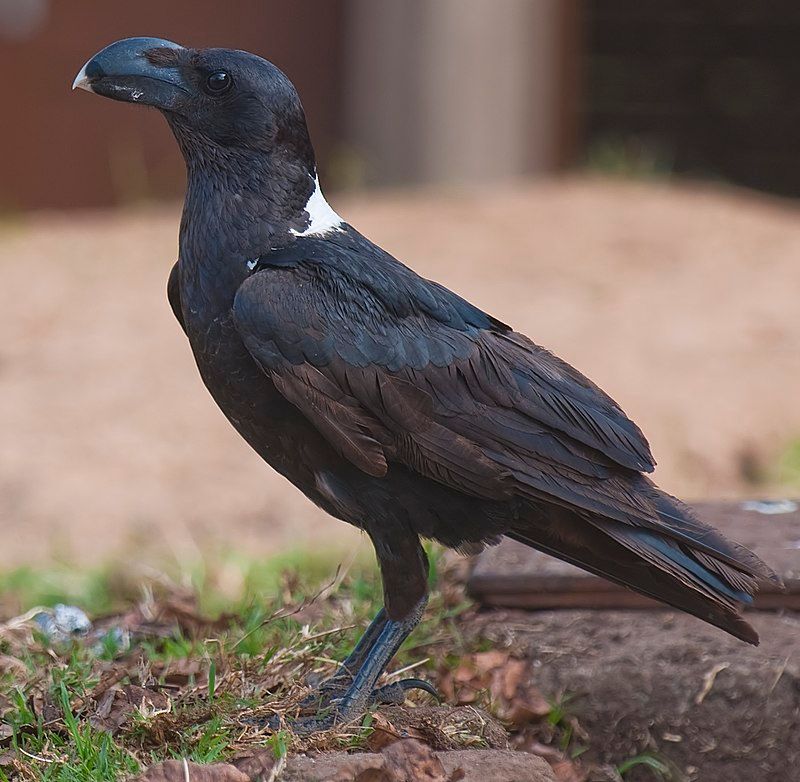
The white-necked raven (Corvus albicollis) is a species of raven that is native to eastern and southern Africa. It is a bit smaller than the common raven, its closest relative, and about the same size as the thick-billed raven (C. crassirostris).
The white-necked raven is easily identifiable by its distinctive white neck feathers, which contrast with its dark brown body and wings. It also has bright yellow eyes, grey-brown legs and feet, and a black bill.
The white-necked raven is a ground feeder, mostly found scavenging for food in open woodlands, savannas, grasslands, and near human settlements. It is known to feed on insects, small mammals, carrion, and fruits. It is also known to occasionally hunt and eat small birds.
The white-necked raven is not considered threatened and its population is stable, however, it is declining in some areas due to habitat destruction and hunting.
| Kingdom | Animalia |
| Phylum | Chordata |
| Class | Aves |
| Order | Passeriformes |
| Family | Corvidae |
| Genus | Corvus |
| Species | C. albicollis |
8. Malachite Sunbird
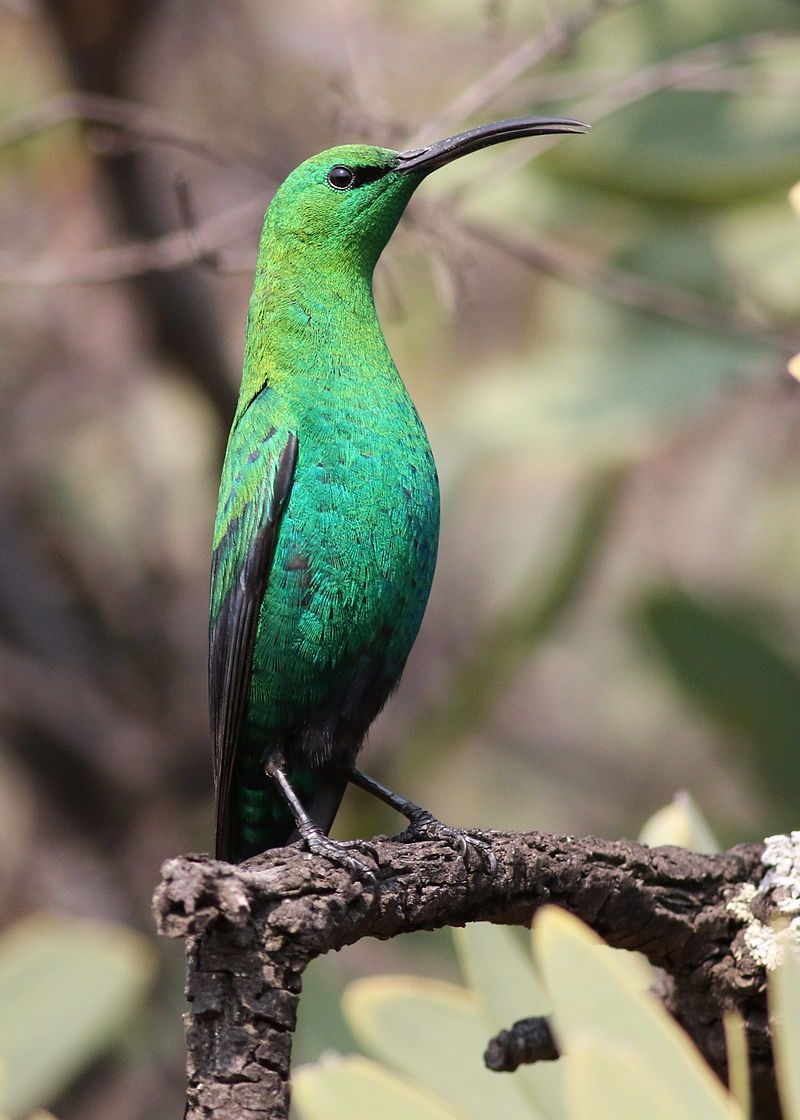
The malachite sunbird is a tiny bird that feeds on nectar. It is native to the highlands of Ethiopia and can be found as far south as South Africa. These birds are a key part of the ecosystem, as they are responsible for pollinating many flowering plants.
They are especially important for pollinating plants with long corolla tubes, an example of which is found in the Fynbos biome of South Africa. Sunbirds have an interesting method for gathering nectar.
They hover in the air with their wings flapping and then plunge into the flower to sip the nectar. This process helps to spread pollen to other flowers, which is essential for the survival of many plant species.
Pollination helps to ensure the reproduction of the plants, which in turn supports the survival of the sunbirds. The malachite sunbird is a vital part of the ecosystems in the highlands of Ethiopia and along the southern coast of Africa.
Not only do they help to pollinate plants, but they also provide a food source for other animals. By pollinating plants, they ensure that the Fynbos biome remains healthy and diverse.
| Kingdom | Animalia |
| Phylum | Chordata |
| Class | Aves |
| Order | Passeriformes |
| Family | Nectariniidae |
| Genus | Nectarinia |
| Species | N. famosa |
9. Hartlaub’s Turaco
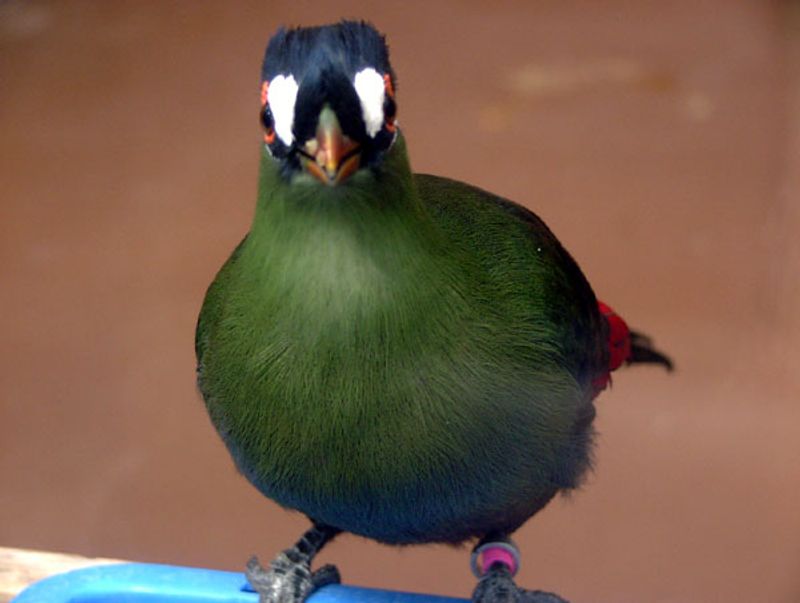
Hartlaub’s turaco is a species of bird found in parts of East Africa, specifically in Kenya, Tanzania, and Uganda. It is part of the Musophagidae family of birds, which is also known as the turaco family.
The species is named after the German physician and ornithologist, Gustav Hartlaub, in recognition of his contributions to the study of birds. Gustav Hartlaub was born in 1814 and studied medicine at the University of Erlangen.
He was a great admirer of birds, and during his medical studies, he wrote several papers on ornithology. Hartlaub then went on to become a physician in Berlin, where he continued his studies in ornithology.
In 1853, he was appointed as a professor in Heidelberg and was given the title of professor of comparative anatomy and zoology. His work included the description of numerous species of birds, and he was also a great advocate for the protection of birds.
He was a founding member of the German Ornithological Society, and his work was recognized and honored by the Prussian government. Hartlaub’s turaco is a medium-sized bird, with an average length of around 21–22 cm.
It is mainly found in the forests of East Africa, and its diet consists of fruits, flowers, and insects. The species is mainly green in color, with a black face, yellow plumage on the wings, and a white tail.
The species is considered to be of Least Concern according to the IUCN Red List, as their population is not threatened or endangered. Hartlaub’s turaco is an important species to East Africa, and its recognition and protection are important for the preservation of the region’s biodiversity.
Gustav Hartlaub’s dedication to the study of birds has been honored by the naming of this species after him and is a reminder of the importance of preserving the environment and its inhabitants.
| Kingdom | Animalia |
| Phylum | Chordata |
| Class | Aves |
| Order | Musophagiformes |
| Family | Musophagidae |
| Genus | Tauraco |
| Species | T. hartlaubi |
10. Silvery-Cheeked Hornbill
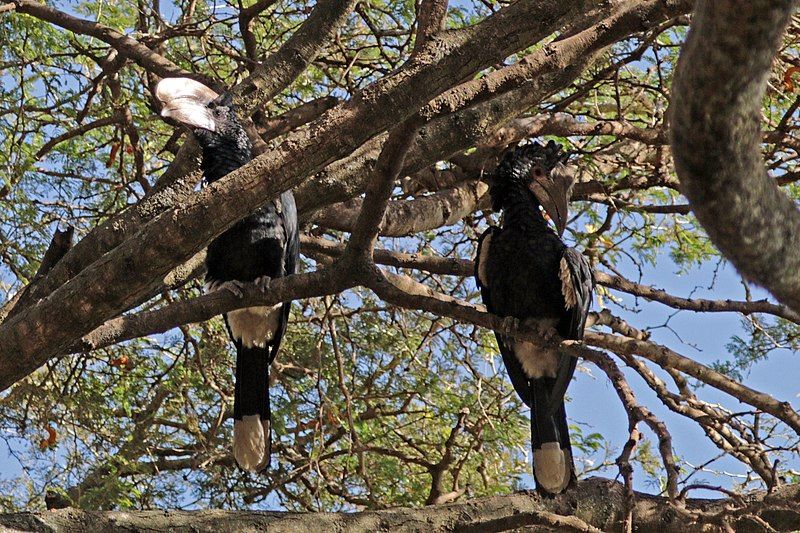
The Silvery-cheeked Hornbill is a species of bird that is native to East Africa. It is a large bird, easily recognizable by its distinctive beak which is curved and has a sharp point.
This species of hornbill is found in the tall, evergreen forests of Ethiopia, Kenya, Tanzania, Zambia, Angola, and South Africa. The Silvery-cheeked Hornbill has a distinct coloring, with its greyish-green feathers on its back, its white-tipped wings, and its silvery-cheeked facial feathers.
It also has a black cap on its head and a white stripe that runs from its bill to its neck. The Silvery-cheeked Hornbill is an omnivore, and it feeds on a variety of items such as fruits, nuts, insects, small reptiles, and small mammals.
It also uses its long beak to probe into tree crevices in search of food. The Silvery-cheeked Hornbill is considered a threatened species due to habitat loss and fragmentation. It is also hunted for its feathers, which are used in traditional ceremonies.
Conservation efforts are being made to protect the species, including habitat protection and captive breeding programs.
| Kingdom | Animalia |
| Phylum | Chordata |
| Class | Aves |
| Order | Bucerotiformes |
| Family | Bucerotidae |
| Genus | Bycanistes |
| Species | B. brevis |
11. Trumpeter Hornbill
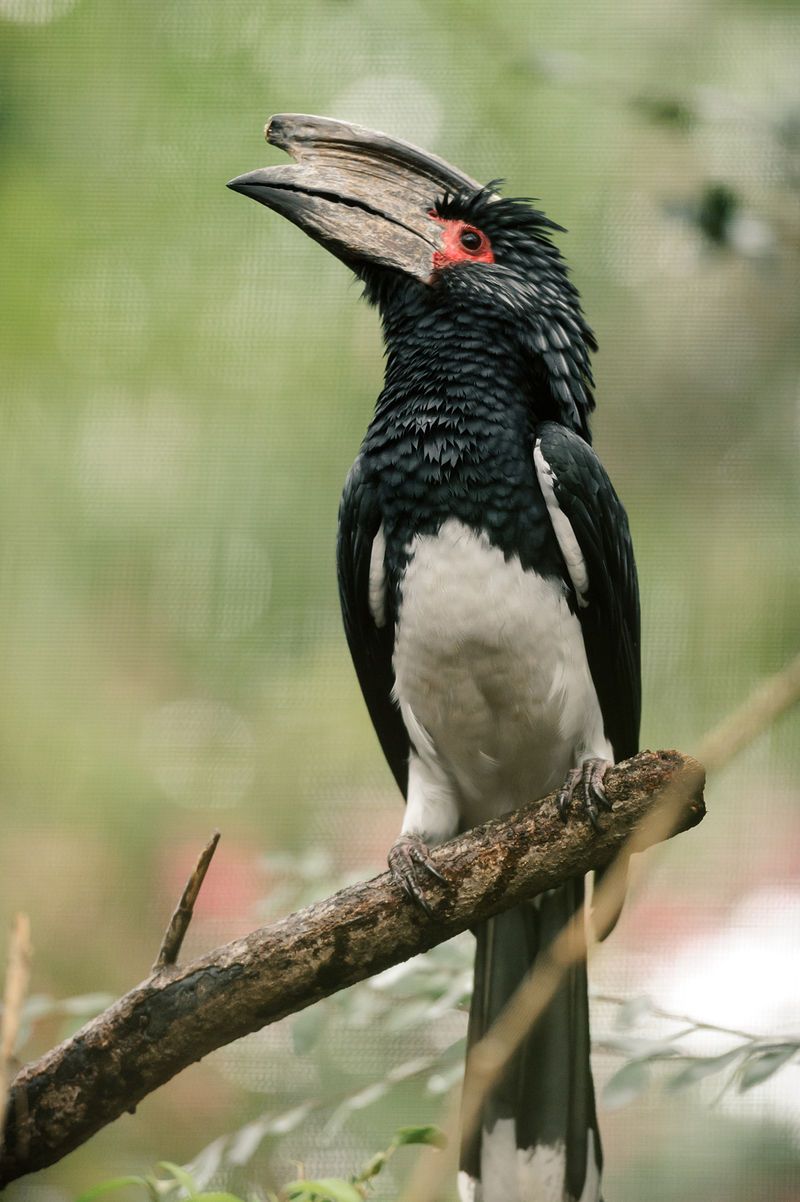
The Trumpeter Hornbill is a medium-sized bird with a length between 58 and 65 cm. It is most easily recognized by its large grey casque, which is a prominent feature on the bill. The casque is slightly smaller in female hornbills.
The eyes of the Trumpeter Hornbill are brown or red, with pink surrounding skin. It has a body mass between 0.45 and 1 kg. In terms of appearance, the Trumpeter Hornbill is very similar to the Silvery-Cheeked Hornbill.
Both species are medium-sized, with a grey casque on the bill. The Trumpeter Hornbill differs from the Silvery-Cheeked Hornbill in the coloration of its eyes and surrounding skin, as well as its body mass.
| Kingdom | Animalia |
| Phylum | Chordata |
| Class | Aves |
| Order | Bucerotiformes |
| Family | Bucerotidae |
| Genus | Bycanistes |
| Species | B. bucinator |
12. Eastern Double-Collared Sunbird
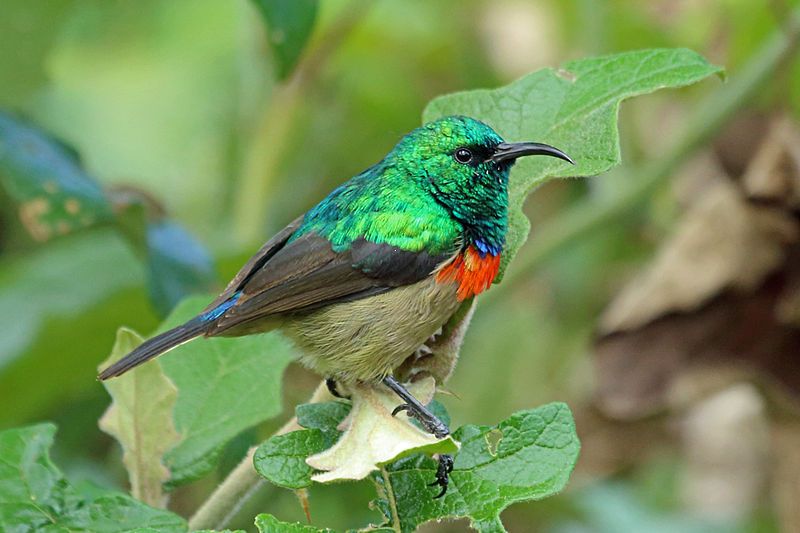
The eastern double-collared sunbird is a species of bird that belongs to the family Nectariniidae. It is mainly found in the upland areas of Kenya and northern Tanzania. This species is characterized by its bright-colored feathers and long curved beak.
Its upperparts are predominantly bright green while its underparts are pale yellow.
The male eastern double-collared sunbird has a distinctive chestnut-colored throat and two black bands around the neck, hence its name. The eastern double-collared sunbird is a small bird, typically measuring between 12 to 14 cm in length.
It feeds mainly on nectar and small insects.
It is quite common in its range and is often spotted in flowery gardens and shrubby habitats. This species is an important pollinator, helping to spread pollen from flower to flower and thereby aiding in the reproduction of many plants.
It is also a source of food for other animals, such as birds of prey and snakes. The eastern double-collared sunbird is considered to be of least concern in terms of conservation status.
However, it is facing a number of threats, including habitat destruction, fragmentation, and degradation. Therefore, it is important that we work to protect its habitat and ensure its long-term survival.
| Kingdom | Animalia |
| Phylum | Chordata |
| Class | Aves |
| Order | Passeriformes |
| Family | Nectariniidae |
| Genus | Cinnyris |
| Species | C. mediocris |
13. Schalow’s Turaco
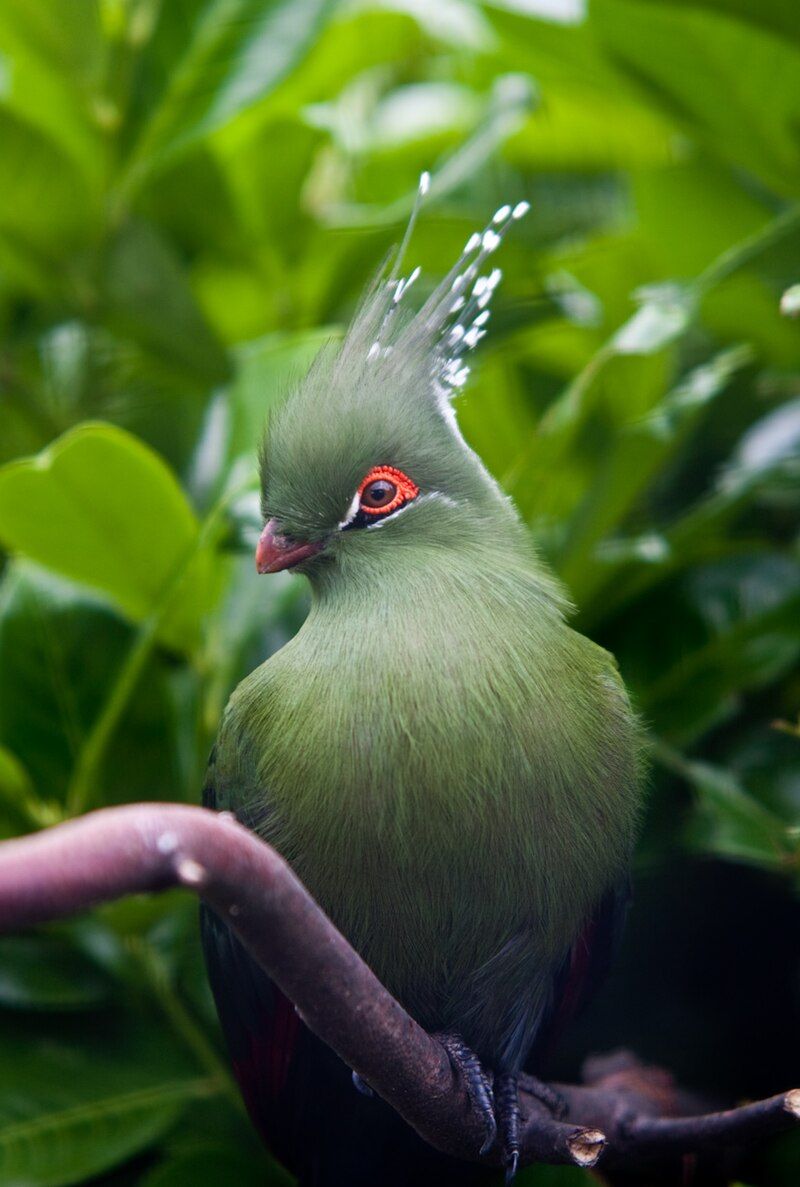
Schalow’s turaco is a member of the Musophagidae family, commonly known as the plantain-eaters or fruit-eaters. This bird species is named after the German banker and amateur ornithologist, Herman Schalow, who first discovered and documented this species in the late 1800s.
Schalow was born in 1847 and worked as a banker before devoting his life to the study of ornithology. He traveled extensively and documented many species of birds, including the Schalow’s turaco.
This species was first documented in 1888 and was given the Latin binomial Tauraco schalowi in his honor. The Schalow’s turaco is a frugivorous bird, meaning it feeds mainly on fruits.
It is native to the tropical forests of central Africa, living in the canopy and feeding on a variety of fruits and insects. The Schalow’s turaco is a medium-sized bird, with an overall length of around 28 cm.
It is mostly green in color, with a black head, a blue and yellow patch on its chest, and a distinctive red bill.
It is also known to make loud calls, which can be heard from a distance. The Schalow’s turaco is an important species in its habitat, as it helps to disperse seeds and helps to pollinate flowers.
Unfortunately, due to habitat destruction and hunting, it is considered to be a vulnerable species. Conservation efforts have been made to protect and preserve this species, in order to ensure its survival.
| Kingdom | Animalia |
| Phylum | Chordata |
| Class | Aves |
| Order | Musophagiformes |
| Family | Musophagidae |
| Genus | Tauraco |
| Species | T. schalowi |
Conclusion
Kilimanjaro is home to a wide variety of birds, from the iconic flamingos to the endangered Abbott’s Starlings. The mountain’s unique environment provides a safe haven for these birds and other wildlife, making it an important part of the global ecosystem.
As climate change continues to threaten bird populations around the world, it is important to protect Kilimanjaro and its birds for future generations.